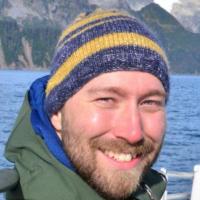Organization
Bay Area Environmental Research Institute
NASA Ames Research Center
Email
Business Phone
Mobile
(720) 276-4457
Work
(650) 604-0143
Business Address
NASA Ames Research Center
NASA Ames Research Center
Building 245, room 102, MS 245-5
Moffett Field, CA 94035
United States
First Author Publications
-
LeBlanc, S.E., et al. (2022), Airborne observations during KORUS-AQ show that aerosol optical depths are more spatially self-consistent than aerosol intensive properties, Atmos. Chem. Phys., doi:10.5194/acp-22-11275-2022.
-
LeBlanc, S.E., et al. (2020), Above-cloud aerosol optical depth from airborne observations in the southeast Atlantic, Atmos. Chem. Phys., 20, 1565-1590, doi:10.5194/acp-20-1565-2020.
-
LeBlanc, S. (2018), samuelleblanc/fp: Moving Lines: NASA airborne research flight planning tool release (Version v1.21), Zenodo., doi:10.5281/zenodo.1478126.
-
LeBlanc, S.E., et al. (2015), A spectral method for discriminating thermodynamic phase and retrieving cloud optical thickness and effective radius using transmitted solar radiance spectra, Atmos. Meas. Tech., 8, 1361-1383, doi:10.5194/amt-8-1361-2015.
-
LeBlanc, S.E., et al. (2012), Spectral aerosol direct radiative forcing from airborne radiative measurements during CalNex and ARCTAS, J. Geophys. Res., 117, D00V20, doi:10.1029/2012JD018106.
Note: Only publications that have been uploaded to the ESD Publications database are listed here.
Co-Authored Publications
-
Gupta, S., et al. (2021), Impact of the Variability in Vertical Separation between BiomassBurning Aerosols and Marine Stratocumulus on Cloud Microphysical Properties over the Southeast Atlantic, Atmos. Chem. Phys., doi:10.5194/acp-2020-1039.
-
Pistone, K., et al. (2021), Exploring the elevated water vapor signal associated with the free-tropospheric biomass burning plume over the southeast Atlantic Ocean, Atmos. Chem. Phys., doi:10.5194/acp-2020-1322 (submitted).
-
Pistone, K., et al. (2021), Exploring the elevated water vapor signal associated with the free tropospheric biomass burning plume over the southeast Atlantic Ocean, Atmos. Chem. Phys., 21, 9643-9668, doi:10.5194/acp-21-9643-2021.
-
Shinozuka, Y., et al. (2020), Daytime aerosol optical depth above low-level clouds is similar to that in adjacent clear skies at the same heights: airborne observation above the southeast Atlantic, Atmos. Chem. Phys., doi:10.5194/acp-2019-1007 (submitted).
-
Shinozuka, Y., et al. (2020), Modeling the smoky troposphere of the southeast Atlantic: a comparison to ORACLES airborne observations from September of 2016, Atmos. Chem. Phys., 20, 11491-11526, doi:10.5194/acp-20-11491-2020.
-
Cochrane, S.P., et al. (2019), Above-cloud aerosol radiative effects based on ORACLES 2016 and ORACLES 2017 aircraft experiments, Atmos. Meas. Tech., 12, 6505-6528, doi:10.5194/amt-12-6505-2019.
-
Kacenelenbogen, M.S., et al. (2019), Estimations of global shortwave direct aerosol radiative effects above opaque water clouds using a combination of A-Train satellite sensors, Atmos. Chem. Phys., 19, 4933-4962, doi:10.5194/acp-19-4933-2019.
-
shinozuka, et al. (2019), Modeling the smoky troposphere of the southeast Atlantic: a comparison to ORACLES airborne observations from September of 2016, Atmos. Chem. Phys. Discuss., doi:https://doi.org/10.5194/acp-2019-678 (submitted).
-
Rozenhaimer, M.S., et al. (2018), Bias and Sensitivity of Boundary Layer Clouds and Surface Radiative Fluxes in MERRA-2 and Airborne Observations Over the Beaufort Sea During the ARISE Campaign, J. Geophys. Res., 123, 6565-6580, doi:10.1029/2018JD028349.
-
Star, T., et al. (2018), 4STAR_codes: 4STAR processing codes, Zenodo, doi:10.5281/zenodo.1492912.
-
Dunagan, S., et al. (2017), Spectrometer for Sky-Scanning, Sun-Tracking Atmospheric Research (4STAR), doi:20170005591.
Note: Only publications that have been uploaded to the ESD Publications database are listed here.

